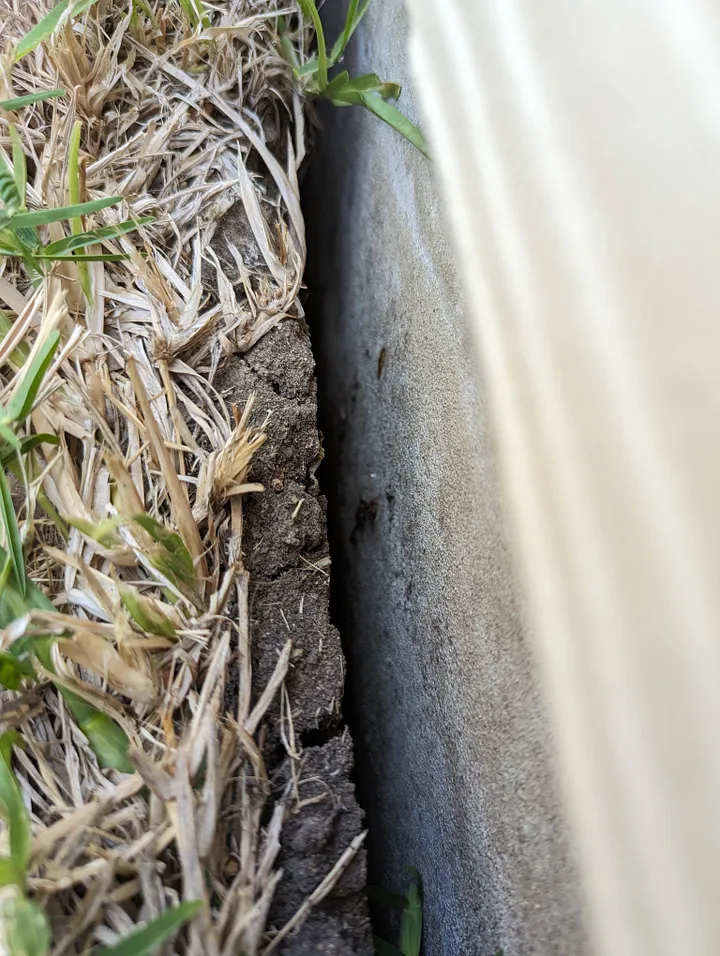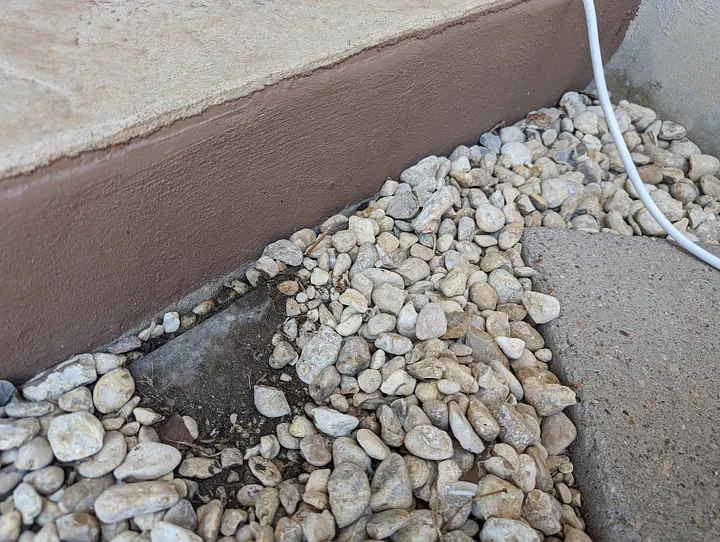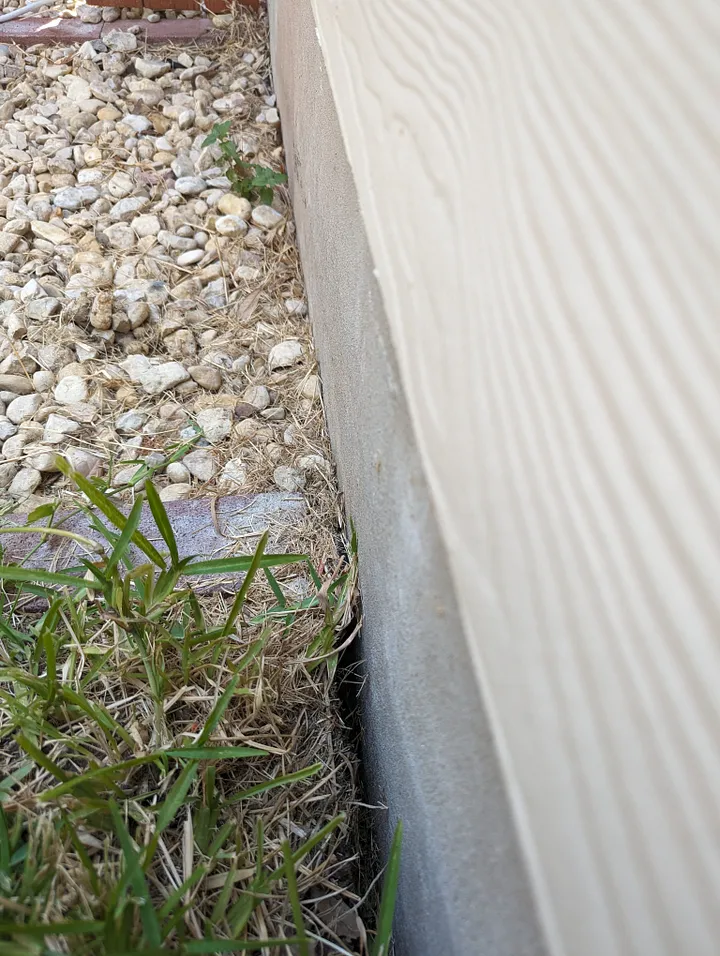Alternate Title: How to avoid soil pulling away from the foundation
Moisture content effect on foundation
The moisture content of the soil has a big impact on your foundation. When it’s hot and dry outside, the soil tends to contract and shrink. This can lead to gaps forming between the foundation and the soil. However, during wet or normal seasons, the soil expands and puts pressure on the foundation.
In order to maintain your foundation you must manage the moisture of the soil year round to avoid this expansion and contraction which will eventually lead to foundation movement and cracking requiring costly repairs. Here are some of the strategies I’ve used for maintaining the moisture content of the soil.

Proper Drainage
Depending on how your property is laid out, you might want to consider installing gutters or French drains to give that water a one-way ticket away from your precious foundation. Too much water in the soil can create abnormal expansion during wet seasons or heavy rain storms.
This was the case with my yard, the east face of the yard would retain water and become a muddy mess after rain. Installing a French drain at the edge of grass which emptied into to the green way behind my house completely transformed the area, allowing me to better manage the moisture content of that side of the house. The west side of my property had the opposite problem, as it was situated on a hill and water would wash away from the house. In addition that part of the house would get the brunt of the afternoon and evening heat thus further drying out the soil around the foundation.
Irrigation Systems
After consulting with an engineer, I was advised to have an irrigation system installed as an automatic way of maintaining the moisture of the soil around the foundation. In my case, both the east and west sides of the foundation had St Augustine grass butting up next to the foundation, with the west side drier and in direct sunlight. As such sprinkler heads were installed in separate zones (east and west) which allowed me adjust how long the watering cycle would be in order to water the dry side more than the wet side of the foundation. The irrigation systems did indeed have a positive effect and allowed me to improve soil moisture year around. However, in very dry seasons and during water restrictions (We occasionally have water usage restrictions in Texas during droughts) the soil would still pull away from the house even as I watered as often as the restrictions would allow.
Thermal Expansion of the foundation
Many foundations are exposed directly to the sun during the afternoon or evening hours. (Which is the warmest part of the day) The exposure can create thermal expansion and contraction of the foundation which over time can contribute to foundation movement. Planting shrubs and bushes next to the house in those areas can act as a sun barrier and reduce the amount of thermal expansion that occurs during these times.
Rock beds
Installing a rock bed with a landscape fabric base next to the house appears to have provided the best moisture protection. The white rocks help reflect sun and heat from drying the ground. In addition the lack of grass means water is not quickly evaporated through the leaves of the grass which reduces the rate at which water will evaporate from the ground. Landscaping fabric is porous, so it allows water to seep through, while protecting the moisture from evaporation during the dry season. My back yard patio would suffer from massive soil contraction during the summer months. Once I installed a rock bed with the Landscape fabric underneath the soil contraction almost completely stopped. The picture below was taken during the driest months of the summer. (I brushed away the rocks to expose the fabric underneath)

Observations
During extremely dry seasons, the Rock beds preformed much better than the areas with grass and irrigation systems. You can see from the picture below the difference a few feet of rock bed makes.
I believe this is due to the way grass and plants evaporate water for photosynthesis in the leaves. So, the more lush greenery you’ve got, the quicker that soil will lose its moisture. It’s like a double whammy of moisture evaporating from the soil, plus the grass drinking up moisture which compounds the drying-out effect, resulting in rapid dehydration.

Recommendations
- If possible, create a 3–5 foot bed of rocks that butts up next the foundation all the way around the house. This barrier of Landscape fabric and rocks provides a powerful barrier against moisture loss.
- Plant shrubs and bushes in the rock bed to provide extra barrier from direct sun light on the foundation which is exposed to the sun in the afternoon and evening. This avoids thermal expansion and contraction of the foundation which occurs every day.
- Install an irrigation system to help regulate the moisture content of the surrounding property. (Including shrubs and bushes planted in the rock garden)
- Install gutters or french drains to move water away from the foundation during rain storms.
You can also read this post on my Medium account